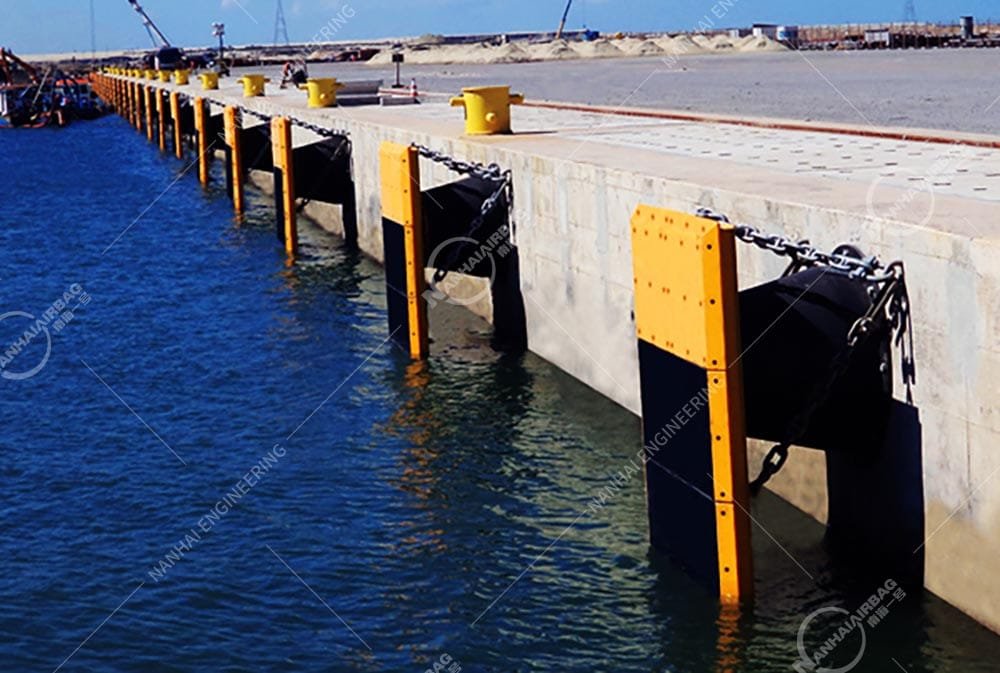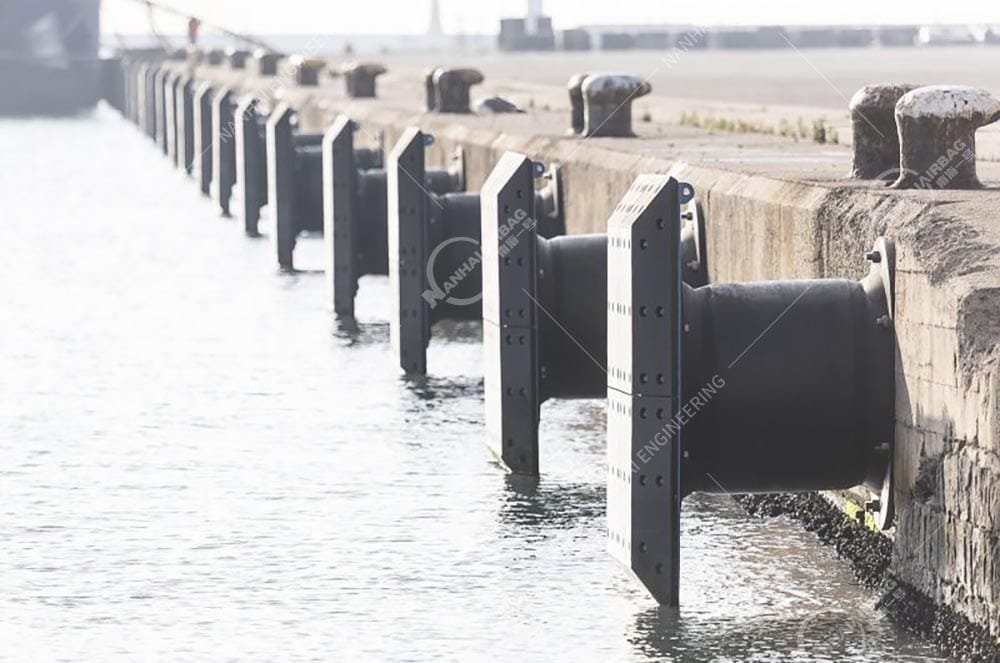Advantages of Caisson Moving Airbags
11/12/2024D-Type Fenders vs. Square Fenders
11/14/2024Difference Between Cone Fenders And Cell Fenders


Cone fenders and cell fenders are two types of fenders commonly used in shipyards and port facilities to protect ships and dock structures from collisions. Their design and functionality have some differences, particularly in terms of shape, application, and energy absorption. Below are the main differences:
1. Shape
- Cone Fender: As the name suggests, a cone fender has a shape resembling an inverted cone, with the wider end facing outwards and tapering to a narrower end. The design is aimed at increasing the contact area with the ship’s hull, thereby improving cushioning effects.
- Cell Fender: A cell fender has a shape similar to a horizontal cylindrical shape, often round or oval. Its cross-section is curved or convex, resembling a large drum. The design is suitable for handling larger impacts.
2. Energy Absorption Performance
- Cone Fender: Cone fenders are typically designed to have a tapering shape that helps distribute impact forces more evenly. This design is effective at absorbing most of the collision energy during a ship’s impact, making it suitable for mild to moderate collisions, especially when the angle of contact with the ship is relatively steep.
- Cell Fender: Cell fenders have a structure that allows them to withstand stronger impacts and absorb energy more efficiently. They are typically used in situations requiring higher energy absorption, particularly when ships are large or collide at higher speeds. Their energy absorption capacity is generally stronger than cone fenders, making them suitable for busy ports with large vessels.
3. Application Scenarios
- Cone Fender: Due to their shape, cone fenders are commonly used in milder collision situations, such as at docks and piers where ships are not subjected to frequent, high-energy impacts. They are suitable for situations where the ship’s approach angle is shallow or collisions are generally light.
- Cell Fender: Cell fenders are better suited for high-impact situations where large ships are involved. They can provide better protection in environments where high collision forces are frequent, such as busy ports or docks with heavy traffic.
4. Installation Method
- Cone Fender: Cone fenders are usually installed either horizontally or vertically, and installation requires consideration of the distance between the ship and the dock, as well as the likely angle of impact. Their tapered shape can help adapt to different types of ships.
- Cell Fender: Cell fenders are also installed horizontally and can handle a wide range of impact scenarios. Their elastic design allows them to reduce the severity of the rebound force, providing reliable protection in harsh conditions.
5. Cost and Maintenance
- Cone Fender: Cone fenders are relatively simple in design, making them cheaper to manufacture and maintain. They are a cost-effective solution for situations where collisions are infrequent or less severe.
- Cell Fender: Cell fenders tend to have a higher manufacturing and maintenance cost, especially when dealing with higher impact forces. However, their durability is typically greater, especially in environments with frequent impacts or where higher protection is needed.
6. Adaptability
- Cone Fender: Cone fenders are versatile and can be used for a variety of ship sizes and types. However, they have limited energy absorption capabilities for high-impact situations.
- Cell Fender: Cell fenders are suitable for a wide range of ships, particularly larger vessels, and offer reliable protection in diverse environments. Their elasticity and energy absorption capacity make them ideal for handling high-impact scenarios.
Summary:
- Cone Fender: Shaped like an inverted cone, suitable for light to moderate collisions, with lower installation and maintenance costs. They are widely used in general docks.
- Cell Fender: Shaped like a cylinder, designed to handle larger impact forces and absorb more energy, making them ideal for high-traffic, frequent-collision environments or large ships.
Choosing the appropriate fender typically depends on the port’s operational environment, the type of ships, and the level of impact energy that needs to be absorbed.
